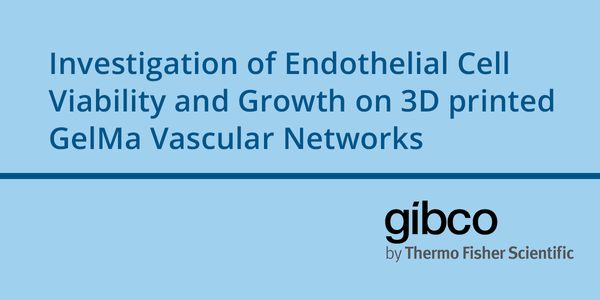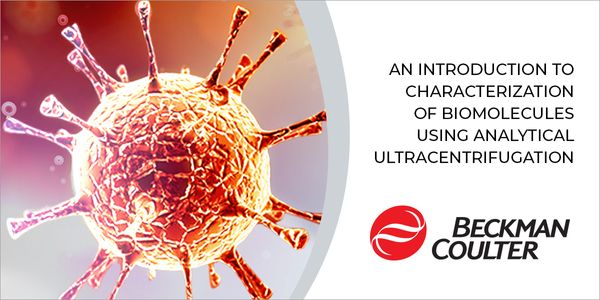Protein nanoparticles
Protein nanoparticles have better biocompatibilities and biodegradability and also have the possibilities for surface modifications. These nanostructures can be synthesized by using proteins like albumin, gelatin, whey protein, gliadin, legumin, elastin, zein, soy protein, and milk protein.
-
OCT 31, 2019 | 9:00 AMDATE: October 31, 2019TIME: 9:00am PDT, 12:00pm EDT INTRODUCTION: A major limitation for the development of 3D engineered tissues is the absence of viable and perfusable...OCT 01, 2019 | 8:00 AMDATE: October 1, 2019TIME: 8:00am PTIn the webinar, Introduction to Characterization of Biomolecules Using Analytical Ultracentrifugation, we discussed the fundamentals of analytical...SEP 27, 2019 | 9:00 AMDATE: September 27, 2019TIME: 9:00am PT, 12:00pm ET Thienopyrazole derivatives have recently emerged as effective antitumoral agents with kinase inhibitory activity. In this s...JUN 18, 2019 | 8:00 AMDATE: June 18, 2019TIME: 08:00am PDTAnalytical Ultracentrifugation (AUC) is one of the most powerful biophysical tools used today for the characterization of biological samples ranging...NanoMIPs, often called “plastic antibodies”, are made using a proprietary self-assembly process where the template molecule is incubated with monomers, each of which is free in so...
In order to expand the treatment options of cancers driven by oncogenic RAS, new cell surface targets need to be identified and characterized. Here, we describe mass spectrometry based phenot...
Speaker:
Josip Blonder, MD
Nanoparticle drug delivery systems (nanoDDS) are among the most promising avenues for effective treatment of many disorders, accomplished by the targeted release of chemotherapeutics, peptide...
The emerging field of RNA nanotechnology has led to the utilization of the platform in the field of bionanotechnology as sensing platforms, diverse nanoparticle construction, in vivo computin...
Speaker:
Daniel Jasinski
Presented at: Beckman Coulter Life Sciences Virtual Trade Show
Sponsored By: Beckman Coulter Life Sciences, Beckman Coulter Life Sciences
Sponsored By: Beckman Coulter Life Sciences, Beckman Coulter Life Sciences
Mass spectrometry (MS)-based profiling of clinical specimens has been increasingly used in cancer research to characterize changes in protein expression between tumor and healthy tissue or be...
Speaker:
Josip Blonder, MD
SEP 10, 2014 | 7:00 AM
Colloidal nanoparticles have become important materials in biomedicine, catalysis, and optoelectronics. Their unique nanoscale properties stem from their size (particularly of the i...
Speaker:
Osman M Bakr, PhD
Presented at: Beckman Coulter Life Sciences Virtual Trade Show
Sponsored By: Beckman Coulter Life Sciences, Beckman Coulter Life Sciences
Sponsored By: Beckman Coulter Life Sciences, Beckman Coulter Life Sciences
OCT 31, 2019 | 9:00 AM
DATE: October 31, 2019TIME: 9:00am PDT, 12:00pm EDT INTRODUCTION: A major limitation for the development of 3D engineered tissues is the absence of viable and perfusable...
OCT 01, 2019 | 8:00 AM
DATE: October 1, 2019TIME: 8:00am PTIn the webinar, Introduction to Characterization of Biomolecules Using Analytical Ultracentrifugation, we discussed the fundamentals of analytical...
SEP 27, 2019 | 9:00 AM
DATE: September 27, 2019TIME: 9:00am PT, 12:00pm ET Thienopyrazole derivatives have recently emerged as effective antitumoral agents with kinase inhibitory activity. In this s...
JUN 18, 2019 | 8:00 AM
DATE: June 18, 2019TIME: 08:00am PDTAnalytical Ultracentrifugation (AUC) is one of the most powerful biophysical tools used today for the characterization of biological samples ranging...
NanoMIPs, often called “plastic antibodies”, are made using a proprietary self-assembly process where the template molecule is incubated with monomers, each of which is free in so...
In order to expand the treatment options of cancers driven by oncogenic RAS, new cell surface targets need to be identified and characterized. Here, we describe mass spectrometry based phenot...
Speaker:
Josip Blonder, MD
Nanoparticle drug delivery systems (nanoDDS) are among the most promising avenues for effective treatment of many disorders, accomplished by the targeted release of chemotherapeutics, peptide...
The emerging field of RNA nanotechnology has led to the utilization of the platform in the field of bionanotechnology as sensing platforms, diverse nanoparticle construction, in vivo computin...
Speaker:
Daniel Jasinski
Presented at: Beckman Coulter Life Sciences Virtual Trade Show
Sponsored By: Beckman Coulter Life Sciences, Beckman Coulter Life Sciences
Sponsored By: Beckman Coulter Life Sciences, Beckman Coulter Life Sciences
Mass spectrometry (MS)-based profiling of clinical specimens has been increasingly used in cancer research to characterize changes in protein expression between tumor and healthy tissue or be...
Speaker:
Josip Blonder, MD









